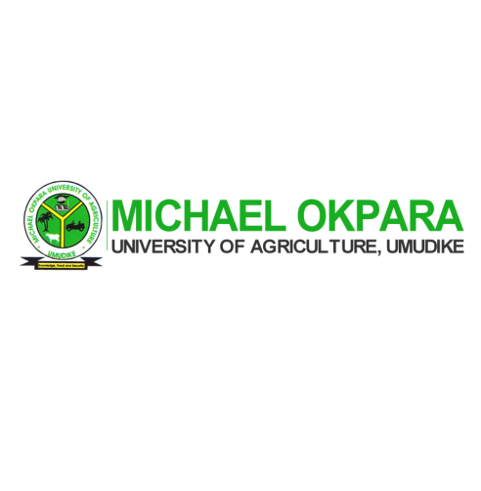Abstract
This study investigated the adequacy of Manpower and instructional resources for the implementation of Vocational Education in Abia State Secondary Schools. The stratified proportional sampling technique was used to select the 206 vocational Education teachers and 76 Head teachers that participated in the study from 76 schools out of 190 schools that ran Vocational Education programme.
Two types of instrument were used for gathering the data required for meeting the demands of the four research questions and two null hypotheses of the study.
The first among these differentiated with the title Resource Indices for Document Analysis (RIDA). The second instrument was a 2-part (A&B) questionnaire titled Vocational Education Resources Availability Assessment Questionnaire (VERAAQ). The response pattern for the VERAAQ was a 4 point modified likert scale with weights that ranged from 4, 3 through 2 to 1 on the four scale continuum.
Means and standard deviation were used to answers for the research questions while z-test statistics were used to test the null hypotheses at 0.05 level of significance.
Findings which shows that no significant difference exists between the mean scores of Vocational Education teachers and head teachers on the adequacy of Instructional Resources for Vocational Education implementation.
Recommendations included that more qualified teachers should be employed in the Secondary School to teach Vocational Education subjects in order to meet up with the deficiency in the available quantity of Vocational Education teachers. Since lack of technical know-how was found.
Chapter One
Introduction
1.1 Background of the Study
Vocational education refers to systematic learning experiences designed to fit the child for gainful employment as semi-skilled or skilled workers, technicians or even professionals in their chosen occupations. Vocational education prepares learners for jobs that are oriented towards manual or practical activities which are related to specific trades, occupations or vocations. According to Federal Republic of Nigeria (2004), vocational education is an integral part of general education. It is a means of preparing for occupational fields and effective participation in the word of work. It is also an aspect of lifelong learning and a preparation for citizenship. More so, it is an instrument for promoting environmentally sound and sustainable development, and a method of alleviating poverty.
In consequence, the former 6-3-3-4 education system and the current Universal Basic Education (UBE) programme also lay emphasis on vocational education because of the importance the system attaches to employment opportunities and acquisitions of practical skills for productivity. The National Policy on Education (2004) clearly shows the scope of occupational areas that vocational education should provide, such as Business Education, Distributive Education, Home economics education, Health Education, and Agricultural Education. However, in this study, vocational education will simply refer to only Business education and Agricultural education because these two areas constitute compulsory courses on vocational education in secondary schools in Nigeria.
Business education prepares students for occupational positions in the public and private industrial endeavours. The areas of specialization in business education are bookkeeping (Accounting) secretarial practice (shorthand, typing and the use of computer). Agricultural education as part of vocational education prepares students for vocational positions in private and public agricultural establishments. The areas of specialization are crop science, livestock production, and Agricultural mechanization. However, at the secondary school level the Business and Agricultural education programmes generally are designed to provide basic knowledge and skills that cut across the areas of specialization in the two fields of these vocational subjects.
Adequacy of instructional resources for Vocational Education programme in these two areas, therefore, involves the acquisition of resources (human and material) required to sustain the implementation of Vocational Education Programme in Secondary Schools. The resources under focus therefore are human resources (Vocational Education Teachers) and instructional resources, required to sustain Vocational Education Programmes. Adequacy of human resources therefore refers to adequate quality and quantity of teaching or instructional staff. Quality staff approximates to appropriate caliber of teaching staff. In this regard, the policy stipulates for the minimum qualification for entry into teaching profession in Nigeria, as the Nigeria Certificate in Education (NCE) in the relevant areas (FRN, 2004) for vocational education in secondary schools.
Other qualifications include university degree in Education, or post graduate degree in education, Higher National Diploma (HND) with Education background in the relevant areas. The quantity of teachers needed is generally determined by stipulations regarding teacher pupil ratio. For general courses it is usually 1:40 however for practical courses the ratio is 1:20. Thus, in the course of this study the teacher/pupil ratio will be used to determine the adequacy of quantity of teachers. Instructional resources are the necessary aids that facilitate teaching and learning. Instructional resources add impetus to programme implementation and sustenance. Key instructional resources needed in Business and Agricultural education include; classrooms, chalkboard, textbooks, libraries, computers, printers, photocopier, laboratories, workshops, Agricultural farms, such as poultry farms and fish ponds
Therefore, adequacy of instructional resources for the implementation of vocational education (Business and Agricultural) specifically involves the acquisition of or putting together the human (teachers) and instructional resources required for the implementation of vocational education in secondary schools in Abia State. It therefore becomes necessary to examine the adequacy of instructional resources for Vocational Education as they relate to the implementation of vocational education programmes because inadequacy of resources in these areas will impede the success of the vocational education programmes. The researcher therefore, intends to look into adequacy of manpower and instructional resources for the implementation of vocational education in secondary schools in Abia State.
Pages: 70
Category: Project
Format: Word & PDF
Chapters: 1-5
Source: Samphina
Material contains Table of Content, Abstract and References.





